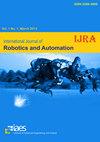Tandem-X satellite data application to four-dimensional of copper mineralization
IF 1
4区 计算机科学
Q4 AUTOMATION & CONTROL SYSTEMS
International Journal of Robotics & Automation
Pub Date : 2019-03-18
DOI:10.15406/iratj.2019.05.00170
引用次数: 1
Abstract
The TanDEM-X functions are based totally on (i) cross-track two SAR interferometry, (ii) along-track SAR interferometry and (iii) new SAR techniques. The three radar strategies evolve from the machine specification described with the aid of the TerraSAR-X satellite and the interferometric configuration itself. Owing to its manifold machine configurations, TanDEM-X is a bendy and multi-mode mission, which grants a broad variety of application possibilities. Dual Acrosstrack SAR interferometry is an identified method to decide the terrain topography. The usage of this technique is mounted for the calculation of phase variances calculated with two SAR antennas separated by a terrific baseline. This permits approximating the radar elevation angle to the phase centre of every photo decision cell, where the height facts are derived from the interferometric section alternate.1,2 Dual Alongtrack SAR interferometry is used to compute the velocities of shifting objects, which are a feature of a segment modification measurement whereby the two SAR antennas achieve complex SAR photographs of the identical location with a quick time lag. Therefore, new SAR strategies will establish the possibility of superior SAR systems that have yet now not or only incompletely been mounted on the ground or with aeroplanes.Tandem-X卫星数据在铜矿化四维研究中的应用
TanDEM-X功能完全基于(i)跨航迹双SAR干涉测量,(ii)沿航迹SAR干涉测量和(iii)新的SAR技术。这三种雷达策略是从TerraSAR-X卫星和干涉测量配置本身描述的机器规格演变而来的。由于其多种机器配置,TanDEM-X是一个弯曲和多模式的任务,这赋予了广泛的应用可能性。双横向SAR干涉测量是一种确定地形的识别方法。这种技术的使用是安装的相位方差计算与两个SAR天线由一个了不起的基线分开。这允许接近雷达仰角的相位中心的每个照片决定单元,其中的高度事实是由干涉截面交替导出。1,2双沿航迹SAR干涉测量用于计算移动物体的速度,这是一种分段修正测量的特征,即两个SAR天线以快速的时间滞后实现同一位置的复杂SAR照片。因此,新的SAR战略将建立目前尚未或只是不完全安装在地面或飞机上的高级SAR系统的可能性。
本文章由计算机程序翻译,如有差异,请以英文原文为准。
求助全文
约1分钟内获得全文
求助全文
来源期刊
CiteScore
1.20
自引率
44.40%
发文量
71
审稿时长
8 months
期刊介绍:
First published in 1986, the International Journal of Robotics and Automation was one of the inaugural publications in the field of robotics. This journal covers contemporary developments in theory, design, and applications focused on all areas of robotics and automation systems, including new methods of machine learning, pattern recognition, biologically inspired evolutionary algorithms, fuzzy and neural networks in robotics and automation systems, computer vision, autonomous robots, human-robot interaction, microrobotics, medical robotics, mobile robots, biomechantronic systems, autonomous design of robotic systems, sensors, communication, and signal processing.

 求助内容:
求助内容: 应助结果提醒方式:
应助结果提醒方式:


